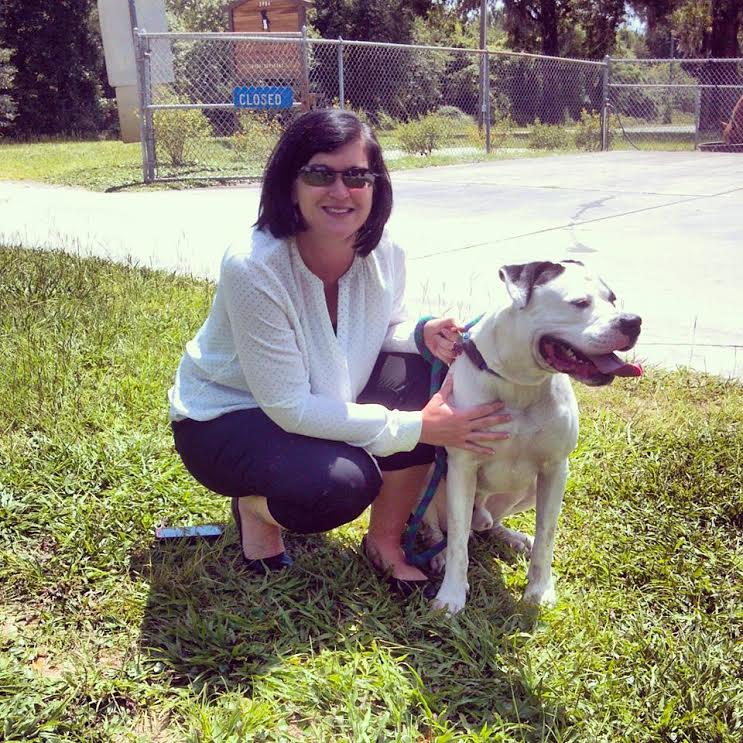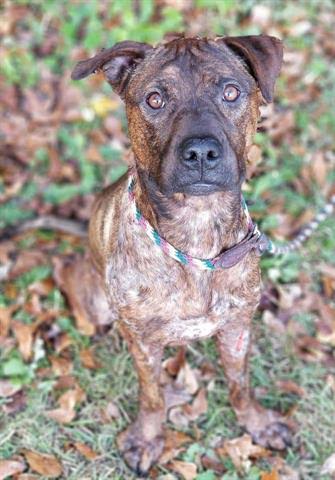News, ideas & inspiration from industry leaders

Totally Rocking Our World: Dr. Jennifer Broadhurst


In 2014, Clay County Animal Services won their division in the ASPCA Rachael Ray $100K Challenge and got an extreme makeover with this veterinary visionary at the helm. Since then, she continues to bring lifesaving intiatives to the pets and people of her community. We chatted with Dr. Broadhurst about what all shelters can do to ensure healthier populations, the next big thing in our field, and the not-so-secret ingredient behind CCAS’ success. (Hint: Two words—shelter medicine.)
The Association: You are so passionate about shelter medicine! What first drew you to it?
Dr. Jennifer Broadhurst: I started working at my local humane society when I was in high school, for job experience in the animal field. I was interested in pursuing a veterinary career working with marine mammals, and did not know what I was getting into working at an animal shelter! The shelter I started at had a fairly low live release rate and minimal support from the local veterinary community. It was an eye-opening experience, and I shifted to an interest in shelter medicine before I started veterinary school—and before it was a recognized career path.
The Association: Tell us about your role at Clay County Animal Services.
Dr. Broadhurst: I am the shelter veterinarian/shelter medical director for CCAS, so I am responsible for the medical and surgical care of all our shelter and foster animals. I think it is very important for the shelter veterinarian to play a role in the shelter operations and management and not just be there for exams and surgeries. Trained shelter veterinarians have a lot to contribute to the overall shelter organization and well-being of the animals in their care.
The Association: Can you share a memorable case of an animal helped by shelter medicine at CCAS?
Dr. Broadhurst: We have a dog named Taffy who came to our facility in November 2019 as a cruelty confiscation. She only weighed 36 pounds and had a body condition score of 1 out of 9. In addition to being extremely underweight, her entire body was covered in open sores and bite wounds that were extremely infected. While I normally do topical treatment with bandaging for open wounds, we obviously could not do this for her entire body. We ended up soaking her whole body daily for a couple of weeks, in addition to antibiotics and pain control. I find wound management in general to be an extremely rewarding treatment because you can watch the progress, but Taffy was a special case. It has now been two months since she came in, and she weighs a whopping 61 pounds and is an amazingly sweet and happy dog, despite everything she must have gone through.

The Association: What initiatives you are working on right now?
Dr. Broadhurst: We are partnering with the small limited admission shelter in our county that does not have a veterinarian on staff, which makes getting their animals spayed and neutered a real challenge and slows down their animal movement. We have started to do some sterilization surgeries for them at our facility, and it has gone well for both organizations. We are now trying to add a few mornings per month for them to bring already sterilized pets for their rabies vaccination and microchip implantation, rather than waiting for a limited number of slots at the private practice they currently use. While it might be a slightly different relationship for a municipal facility and private shelter, we both hope that by moving animals through their facility more quickly, it will free up space for them to transfer in more animals from us.
The Association: As we know, not all sheltering agencies have a full-time vet on staff—what are next steps for organizations that are looking to add a shelter vet or increase hours?
Dr. Broadhurst: I think we are really getting to the point in animal welfare that shelters cannot be as successful as they would like without having at least a part time or contract veterinarian. The expense and staff time it takes to transport animals to outside facilities for sterilization surgery is often more costly than the cost of a veterinarian to perform exams and surgeries on site. A shelter veterinarian can also help promptly treat injured animals and identify infectious disease concerns. Animal shelters that do not currently have a veterinarian on staff, may want to start with adding a part-time or contract veterinarian to do medical rounds, exams, and review or write protocols. Then as the shelter is ready to bring surgery in-house, they can work with the veterinarian to figure out how/where they can set up a surgery suite in their facility.
When decisionmakers are trying to decide whether they can afford a veterinarian, they should look at what they are currently spending on sterilization surgeries and exams, what they are spending in staff time for transport, and how it is affecting their length of stay for the different categories of animals in their care.
The Association: What are some key things all shelters can do to ensure healthier populations?
Dr. Broadhurst: Shelters should have a standard protocol for the intake treatments incoming animals receive, based on age and species, that are followed by all staff. These protocols should be developed or reviewed by a veterinarian with experience in shelter medicine. Vaccination and parasite control given as soon as the animal enters the shelter can make a big difference in helping to protect the population. Good population monitoring and daily rounds can help identify any problems in individual animals, as well as any new trends in the population. Staying within the capacity that your staff and facility can handle and preventing overcrowding are another essential component. For our cat friends, stress reduction is key to keeping them happy and healthy!
The Association: From your vantage point, what’s the next big thing in sheltering?
Dr. Broadhurst: As shelters across the country are doing a better job with placing animals, as well as seeing a downward trend in animal intake, we are getting much more complicated cases. There is definitely a higher expectation of veterinary services provided, including difficult medicine cases, orthopedic surgeries, dentistry, and more diagnostics. We are facing the same challenges with dogs with manageable behavioral conditions in need of behavior modification.
Additionally, the role of animal shelters in many communities is changing to more of a community resource center. While this has been the case for many private organizations, there are now many municipal facilities moving away from an adversarial role with the community and a reactionary approach to problems and into more of an education and prevention role. This is a trend that I think will continue and expand in the animal welfare community as a whole.
Learn more:
Clay County Animal Services on Facebook
Video: Meet Dr. Jennifer Broadhurst
Shelter Medicine Webinar Series
Upcoming Webinar: “Optimal Staffing for Shelter Medical Departments & Clinics,” 3/11


